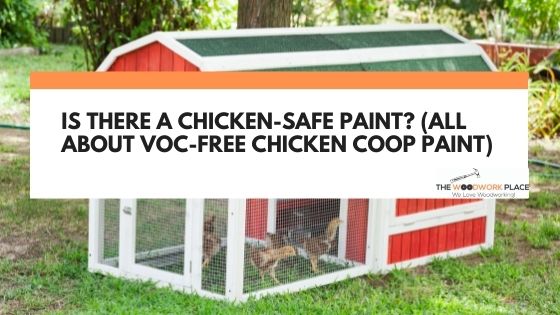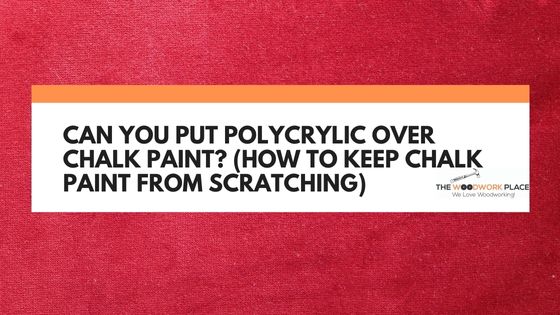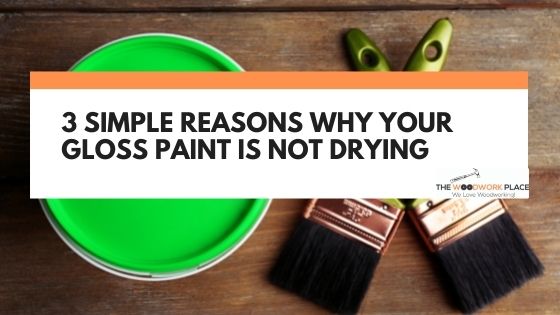Wooden utensils, such as spoons and bowls, need food safe finishes. Which is why food grade mineral oil is the best choice for sealing wooden surfaces. Especially ones that come in direct contact with food.
However, what kind of wood paint is equally safe enough for wooden kitchen utensils?
Well, in this post, you’ll learn which ingredients you should look for in a food safe paint product. We also reveal which biodegradable VOC-free paint is safe enough to come in contact with food.
Plus keep reading to learn why wooden cutting boards are rarely covered in paint.
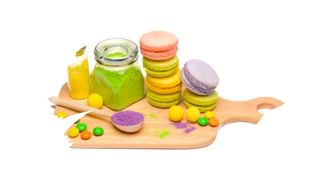
This post may contain affiliate links to products that we receive a commission for (at no additional cost to you). Learn more here.
What Type Of Wood Paint Is Food Safe?
The only kind of food safe wood paint is one that contains food safe resins and coatings.
That’s why food safe paints only contain ingredients found on the US FDA’s, (The United States Food and Drug Administration), list of food safe resins.
Paints that meet this standard are used to paint areas that could come in direct (or indirect) contact with food and water. So, these paints can often be found coating the walls of eateries, water tanks, and meat processing plants.
Now, a lot of paint products claim that they’re food safe once dry. However, certain types of paint, (such as acrylic paint), can melt if they come in contact with very hot food. And that runs the risk of paint chemicals getting into the food on your plate.
You can check out the US FDA’s full list of food safe resins and coatings by clicking here.
But Can You Actually Buy Food Safe Paint?
Yes, you can. Simply cross-check the label of any paint product claiming to be food safe, against the FDA’s list.
However, if you just want to grab a non-toxic paint right off the shelf, you’re best bet is to get Milk Paint.
You see, milk paint contains natural ingredients. And it does away with the toxic chemicals associated with most wood paints. Instead milk paint uses harmless milk proteins, calcium carbonate (lime), and natural pigments, to add color to wood.
It’s 100% natural, so there are no harmful VOCs with this top coat. VOCs, (volatile organic compounds) are responsible for the eye-watering fumes released from acrylic paints and oil paints.
Milk paint is sold as a dry powder. And, after you’ve mixed this powdered paint with water, you’ll have around 24 hours to use that paste before it goes off. This is because the milk proteins in this paint won’t last long, if you leave them to sit around in water.
But, once you apply it, it will dry within 30 minutes or so. And a fresh coat of milk paint leaves behind color that is odorless, won’t melt due to heat, and won’t wash off.
You don’t even need to prime the wood first with a chemical sealer. You can simply brush milk paint right onto raw wooden surfaces, and it will stay there permanently.
OK. But What Are The Disadvantages Of Using Milk Paint On Wood?
There are a few key disadvantages to using this food safe paint on wooden surfaces;
A). Bonding
Milk paint is biodegradable and environmentally safe. Which means it does not contain strong chemical bonding agents. So, if you don’t apply enough coats of milk paint, it can scrape off too easily.
B). Thin Coat
It is also a fairly watery paint too. Which makes sense, since you need to mix it with a lot of water in the first place.
That’s why a coat of milk paint is incredibly thin compared to other wood paints. It takes at least 4 coats of this paint to really coat it on thick enough. While, if you only use 2-3 coats, the coverage will be too thin.
C). Matte Finish
You can get other wood paints in a range of finishes, such as high gloss, semi-gloss and satin.
However, milk paint finishes are all matte finishes. And milk paints final waxy appearance is due to the fact that it doesn’t contain any glossy chemical additives.
Is It Possible To Stain A Cutting Board To Add Color To It?
We rarely recommend using any kind of stain on a cutting board.
A cutting board’s used to prepare food—so it makes sense that wood stain will eventually come into direct contact with the edible stuff. That’s why wood stains (even if they’re ‘food safe’) aren’t the best choice for your cutting board.
However, there is one possible food grade wood stain that won’t break the bank: coffee! We explore this more in-depth in our post here: Can You Apply Wood Stain To A Cutting Board?
What About Acrylic Paint? Is Acrylic Paint Food Safe?
No, it is not. Acrylic paints are chock full of unsafe micro-plastics and chemical pigments. And they are wholly unsuited for coming into contact with any food or water.
In other words, do not use this paint to coat your wooden spoons, bowls or cutting boards. In fact, we cover more on this subject right here on The Woodwork Place in our post: Is Acrylic Paint Food Safe Enough For A Cutting Board? Click here to learn more.
How About Enamel Paint. I Read That Enamel Paint Is Food Safe…
Enamel paints are not food safe. Water-based enamel paints contain a lot of toxic ingredients in them, such as white lead.
And the oil-based enamel paints are even worse when it comes to food safety. They are highly flammable, and contain poisonous methyl alcohol.
In short, a coat of enamel paint should not come anywhere near your food.
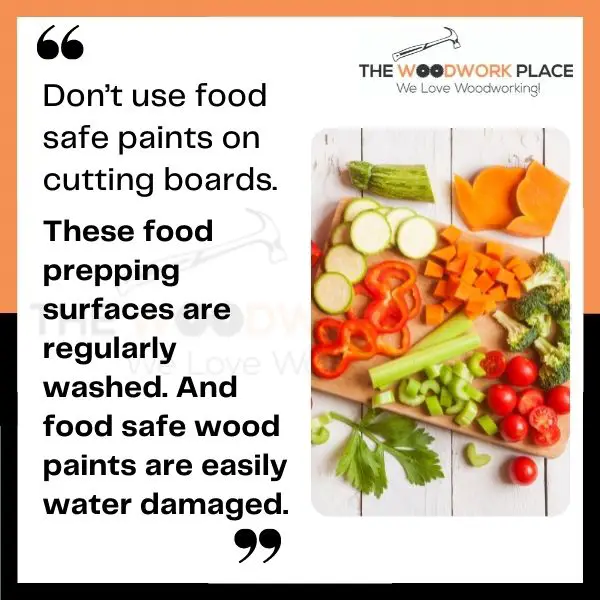
Giving a bamboo cutting board a fresh coat of paint can seem like an easy way to revamp it with some gorgeous colors. But beware – painting your cutting board seals its surface. Take a look here to learn more: Can You (Or Even Should You) Paint A Bamboo Cutting Board?
So, Can You Use A Food Safe Paint On A Cutting Board?
You can…but paint is not suitable for a regularly used cutting board.
If that cutting board is purely decorative, you can put paint on it. You can even put acrylic or enamel paint on it too, if you want.
But, a cutting board meant for active food-prep will be washed on the regular. So, that means it will be repeatedly soaked with water.
Now, wood can warp and rot if it gets repeatedly exposed to water like this. That is why we finish wood with a water-repellent oil or sealant.
Paint, (at least food safe paints), are not water-repellent enough to protect wood. They simply won’t hold up against relentless soapy rinses. For example, a coat of milk paint is easily water damaged if it gets drenched.
That is why we seal and protect cutting board wood using 100% pure food grade mineral oil. This non-toxic non-drying oil prevents cutting boards from absorbing water. It does this by soaking down into wood grain. And regular applications of mineral oil (once every 1-2 weeks) prevent cutting boards from succumbing to wood rot.
However, a board with a coat of paint (even if its a water-rinsed coat), cannot absorb mineral oil evenly.
Related Post: Walnut Oil Vs Mineral Oil: Which One’s Better For Your Cutting Board?
To Wrap Up, Here Are The 3 Key Takeaways From This Post…
1). A food safe paint is one that contains no toxic chemicals or poisonous ingredients. 2). Milk paint is an environmentally friendly food safe paint that can be applied directly onto raw wooden surfaces. 3). However, don’t use food safe paint on cutting boards. These food prepping surfaces are regularly washed. And food safe wood paints are easily water damaged.
References:
Enamel (Paint) – an overview | ScienceDirect

